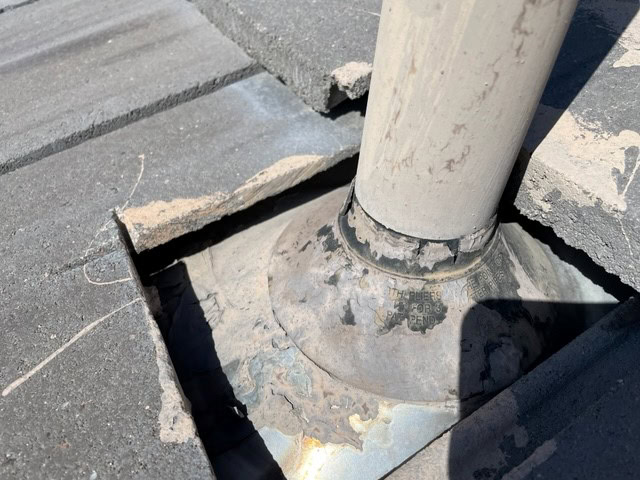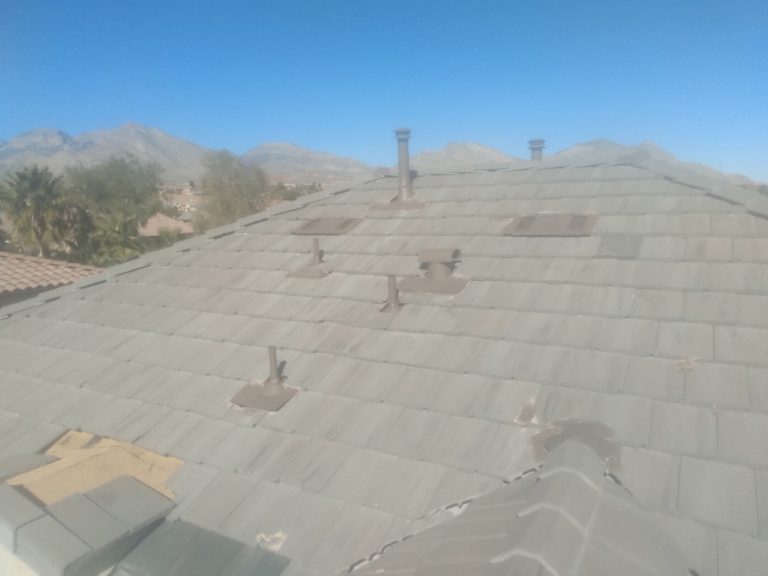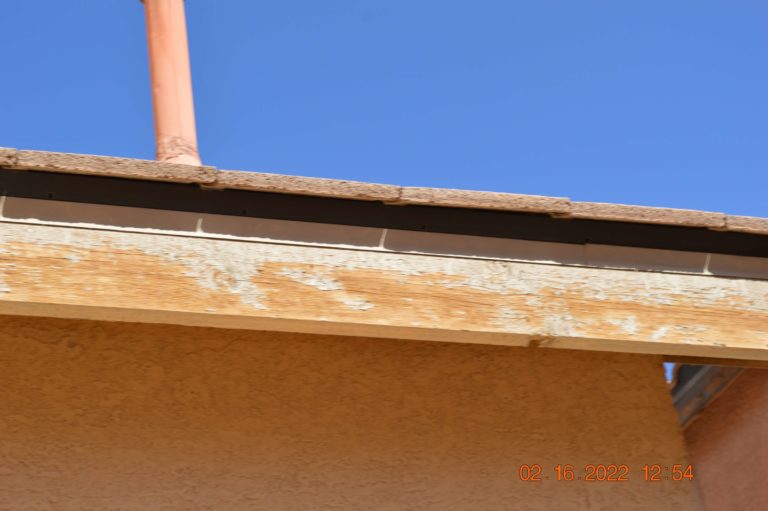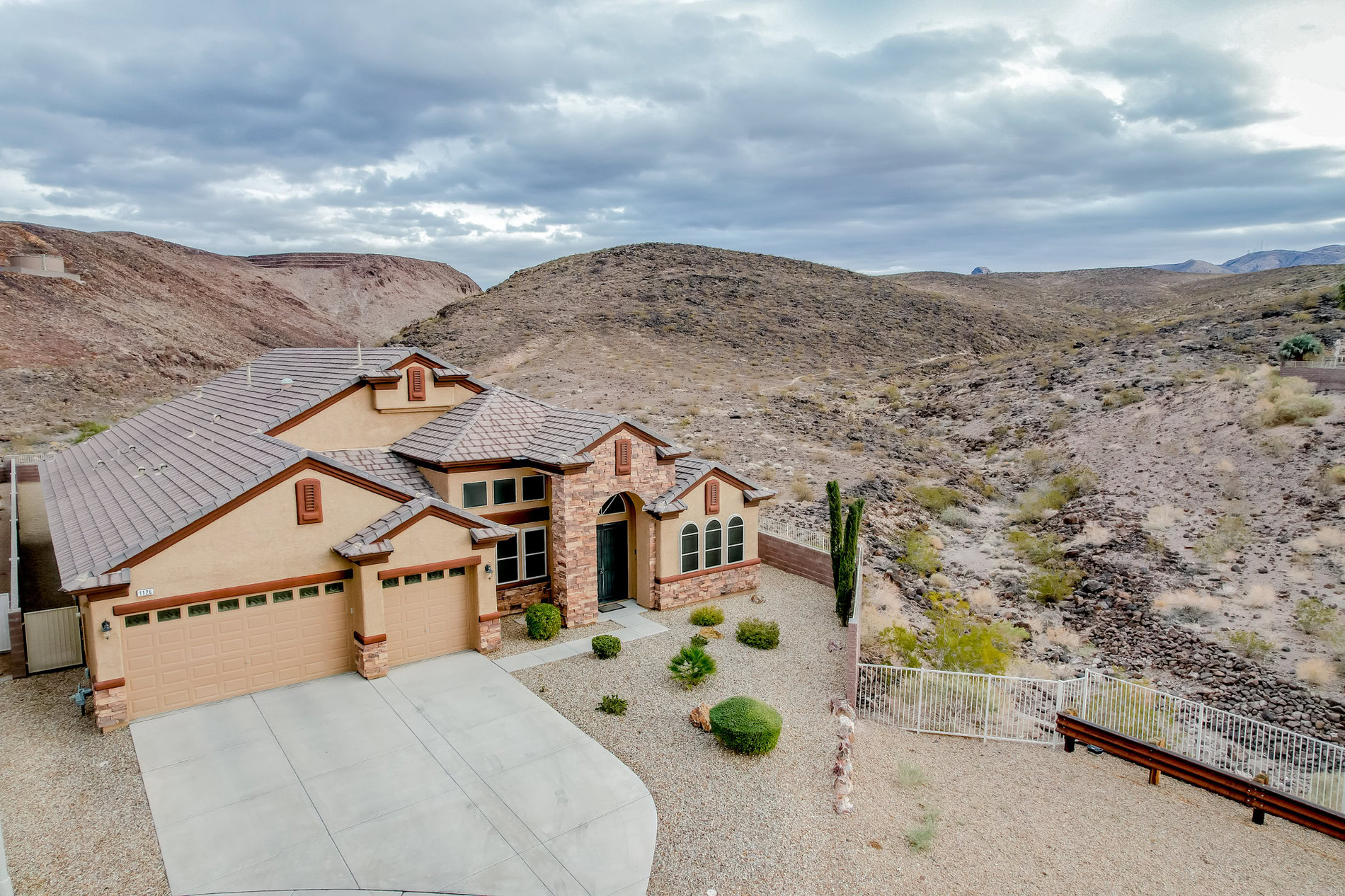Vegas’ extreme heat, high winds and monsoon rains impact the home exterior and subsequent maintenance of the roof of a home. Many people believe tile roofs in Las Vegas last 50+ years.
This is true for the tile but there are other components of a roof that don’t easily withstand the natural elements of the desert: the paper underlayment (or felt) and plywood.
General Tile Roof Maintenance
The concept of tile roof maintenance is wise to grasp if you own a rental property in Las Vegas or Henderson as it could help extend the roofs overall life. Most roofs in Vegas consist of tiles, a paper underlayment and plywood as the main components. The mastic, paint and sealant placed around the tiles, hip and joints protect the paper underlayment and plywood.
What does roof maintenance consist of?
- Replace all broken tile on entire roof to match as close as possible.
- Any tile that is slipped out of place, put back and secure properly.
- Apply silicone on corners that are chipped. Chipped corners are not considered broken tiles.
- Apply mastic and paint on all hips and joints.
- Seal all pipe jacks as needed and paint to match.
- Clean roof and valleys of all debris.
Components of a Tile Roof
A tile roof is a popular roofing option due to its durability, aesthetics, and longevity. When discussing the components of a tile roof, it’s important to understand both the primary materials and the underlying structure that supports those materials. Here’s a breakdown of the main components:
Roofing Tiles: These are the primary visible component. Tiles can be made from various materials:
Clay tiles: Traditional and long-lasting, often used in Spanish or Mediterranean architecture.
Concrete tiles: Heavier and more durable than some other types.
Underlayment: This is a water-resistant or waterproof barrier material that is laid directly onto the roof deck. It provides an extra layer of protection against water infiltration. Felt paper is commonly used, but synthetic underlayments, which are lighter and more durable, are becoming more common.
Flashing: Made from metal, this component directs water away from critical areas of the roof, such as valleys, vents, and chimneys, to prevent leakage.
Battens: These are horizontal strips of wood or metal that are attached directly to the roof deck. They provide a raised surface on which to lay the tiles. This allows water to drain away more effectively and can increase the longevity of the roof.
Fasteners: Tiles need to be secured to the battens or roof deck. This is typically done using nails or screws, depending on the specific roofing tile type and local regulations.
Ridge Caps: These are special tiles designed to cover the ridge or hip of the roof. They’re essential for both aesthetics and water-shedding purposes.
Ventilation: Proper ventilation ensures that any trapped moisture can escape, reducing the risk of rot or mold development. Vents can be installed at the ridge, eaves, or other strategic points on the roof.
Valleys: These are channels that allow water to flow off the roof. They are particularly crucial in areas where roofs have multiple intersections. The design and installation of valleys are vital to ensure effective water drainage.
Drip Edge: This is a metal flashing or other material applied at the edges of the roof to direct water away from the fascia and into the gutters.
Gutters and Downspouts: Although not directly part of the roof, these components are critical in ensuring water is effectively channeled away from the building’s foundation.


What is a "Tile Reroof"?
A tile reroof may be recommended based on the age of home and if the paper underlayment has exceeded its life and is badly degraded. A “reroof” consists of the following:
- Remove existing tiles and stack
- Remove existing battens and haul away
- Strip existing felt down to plywood sheathing and remove from site (some roofers only partially remove the original layer)
- Replace any degraded plywood
- Install two layers of 30lb felt over existing felt to completion
- Install new drip edge and new bird stop around perimeter of roof
- Re-install existing tiles over new battens and new underlayment to completion
- Replace any broken tiles with new tiles
- Re-flash all vents and pipes where applicable
- Supply and install new hip and ridge enclosure
Builders back in the day typically only installed 1 underlayment layer. A reroof consists of 2 underlayment layers of 30lb felt over the plywood. We use both Vegas Born Roofing and Desert Valley Roofing for repairs and reroofs.

What's the cost of a Reroof?
Depending on the sq.ft. of a home’s roof a reroof can be anywhere from $7k to $25k+. For example, a 1,000 sq.ft. home would be on the lower cost end as the sq.ft. of the home is so small. A single story home that is 4,000 sq.ft. may cost upwards of $25k.
Wood Fascia
In basic terms fascia is a wood trim just below the roof line. In Vegas the wood fascia is painted to help protect it from the natural elements. Over time the paint on the fascia will degrade and need to be repainted.
Below is an example of a wood fascia trim that needs painting. Cost can range from $800 to $1,800+ depending on the size of the home.
If wood fascia becomes too degraded it will need to be replaced at a cost of $20/foot. Maintenance is key and keeping the wood fascia covered in paint will help protect it from the natural desert elements of sun, wind and rain.

Be informed & knowledgeable about tile roofs.
The severe sun, wind and rain can impact the exterior elements of a home in Las Vegas (roofs, wood fascia, exterior paint/stucco, windows, landscaping, etc.).
It’s wise to be familiar with these types of home exterior maintenance items to ensure your investment property is well maintained throughout a tenancy.
